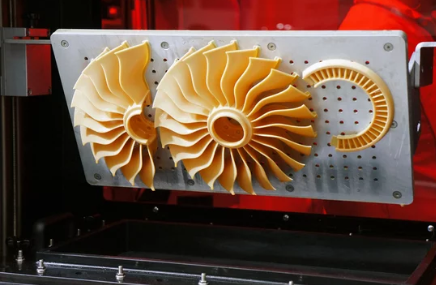Are you ready to dive into the mesmerizing world of 3D printed lithophanes? Transform your cherished memories into breathtaking pieces of art that come alive when bathed in light. In this article, we’ll guide you through the enchanting process of creating these unique keepsakes. From selecting the perfect image to mastering the tools and software, we’ll unlock the secrets behind this magical art form. Whether you’re a seasoned enthusiast or a curious beginner, prepare to unleash your creativity and embark on a journey of personalized artistry. Let’s explore the infinite possibilities together.
Choosing the Perfect Image
When selecting the ideal image for your 3D printed lithophane, start by considering the image’s composition and background. Think about how the different elements will translate into the three-dimensional form. Look for images with a solid background, as it will make the diffusing techniques and creative lighting ideas more effective. You can also experiment with image editing to enhance the details and make the image more visually appealing. Try adjusting the brightness, contrast, and saturation to achieve the desired effect. Additionally, consider using alternative materials for your lithophane, such as translucent filaments or even resin, to create unique and captivating results. If you encounter any issues during the printing process, remember to troubleshoot by adjusting the print settings, checking the bed leveling, and ensuring proper filament adhesion. Lastly, don’t be afraid to let your creativity shine through by exploring different lighting ideas. You can use LED strips, spotlights, or even backlighting to create stunning effects and bring your lithophane to life. So, go ahead and choose the perfect image that speaks to you and embark on the magical journey of creating your very own 3D printed lithophane masterpiece.
Capturing Images From the Web
To capture images from the web for your 3D printed lithophane, utilize a desktop tool like the Snipping Tool to easily and precisely select the desired image. With the Snipping Tool, you can capture any image you find online and use it to create your unique keepsake. However, if you’re looking for alternatives to the Snipping Tool, there are other image capturing tools available, such as Lightshot, Greenshot, or Snagit. Once you have captured the image, you can use image editing software like Photoshop or GIMP to make any necessary adjustments before converting it to the appropriate format for 3D printing.
When creating your lithophane, it’s important to consider the type of filament you will use. Different types of filaments, such as PLA or ABS, can produce varying results in terms of translucency and color. Additionally, mastering bed leveling techniques is crucial to ensure a successful print. Proper bed leveling helps to achieve a smooth and even surface, which is essential for creating high-quality lithophanes.
After printing, you may want to apply post-processing techniques to enhance the appearance of your lithophane. Tools like sandpaper or a heat gun can be used to smooth out any imperfections or rough edges. These post-processing tools allow you to refine your lithophane and create a polished and professional finish. So, don’t forget to consider these factors when capturing images from the web for your 3D printed lithophane.
Converting Images to PNG Format
Now let’s delve into the process of converting your captured images into the PNG format for your 3D printed lithophane. Converting images to PNG format is an essential step in preparing your design for 3D printing. Once you have captured your image and made any necessary edits using image editing software, it’s time to save it in the PNG format. This is because the slicing programs used for creating lithophanes, such as Simplify3D, require PNG files. By saving your image as a PNG, you ensure compatibility with these programs.
When saving your image as a PNG, make sure to consider the filament options you plan to use for your lithophane. White PLA filament is recommended for consistent translucency, which is essential to achieve the desired effect. Additionally, think about the lighting solutions you will be using to display your lithophane. The translucent properties of the filament combined with proper lighting can create stunning visual effects, bringing your image to life.
Converting your images to PNG format is just one step in the process of creating your unique 3D printed lithophane. With the right software, filament, and lighting, you can transform your captured images into beautiful keepsakes that capture the magic of this innovative art form.
Creating a Full Round Circle
To create a full round circle for your 3D printed lithophane, follow these steps:
– Creating a 3D spherical shape: Start by using a website called cutmypic.com to transform your flat image into a full round circle. This will give your lithophane a unique and captivating appearance.
– Experimenting with light diffusion: Play around with different filament colors and thicknesses to achieve the desired level of light diffusion in your 3D printed lithophane. This will allow you to create stunning visual effects when the light shines through.
– Mounting and displaying methods: Consider different mounting and displaying methods for your 3D printed lithophane. You can use a stand or frame to showcase your creation, or even incorporate it into a larger artwork or installation.
– Using alternative materials: Don’t limit yourself to traditional filament materials. Explore using alternative materials such as wood, acrylic, or even metal to add a unique touch to your 3D printed lithophane.
– Adding personalized touches: Make your lithophane truly one-of-a-kind by adding personalized touches. You can incorporate text, symbols, or even photographs to create a meaningful and memorable keepsake.
Tools and Software for Lithophane Creation
When creating your 3D printed lithophanes, it is essential to have the right tools and software for the job. To start, there are various software programs available that can help you convert your images into grayscale and process them for lithophane creation. Some popular options include Cura, Simplify3D, and Photoshop. These programs offer advanced software techniques that allow you to customize your lithophanes to your liking.
In addition to software, you also need a 3D printer to physically print your lithophane. When it comes to choosing the filament for your lithophane, there are alternative filament choices available. While PLA and ABS are commonly used, you can also experiment with other filaments to achieve different effects.
Troubleshooting common issues is an important part of the lithophane creation process. If you encounter problems such as uneven thickness or poor image quality, there are resources available online that can help you troubleshoot and find solutions.
Lastly, innovative lighting solutions can enhance the beauty of your lithophanes. Experimenting with different types of lighting, such as diffusing LEDs or using colored bulbs, can create stunning effects and bring your lithophanes to life.
With the right tools, software, and techniques, you can create unique and personalized lithophanes that will truly amaze. So, let your imagination soar and start creating your own magical 3D printed keepsakes.
Tips for Successful Lithophane Printing
For successful lithophane printing, follow these helpful tips:
– **Adjusting Layer Height**: Play around with the layer height settings on your 3D printer to find the perfect balance between detail and printing time. Higher layer heights can result in faster prints, but may sacrifice some fine details.
– **Experimenting with Print Speeds**: Try adjusting the print speed to see how it affects the quality of your lithophane. Sometimes, slowing down the print speed can lead to crisper and more accurate results.
– **Choosing Filament Color**: The color of filament you choose can greatly impact the look and feel of your lithophane. Consider using a white or translucent filament to achieve a beautiful, glowing effect when light shines through.
– **Proper Bed Leveling**: Ensuring that your print bed is properly leveled is essential for a successful lithophane print. Take the time to calibrate your bed to avoid any issues with adhesion or warping.
– **Post Processing Techniques**: Don’t be afraid to experiment with post-processing techniques to enhance the appearance of your lithophane. Sanding or painting can add a touch of uniqueness and make your print truly stand out.
Post-Processing Techniques for Enhancing Results
Now let’s dive into some post-processing techniques that you can use to enhance the results of your 3D printed lithophanes. After the initial printing, there are several ways to further refine and beautify your lithophane creations.
First, let’s talk about polishing techniques. You can use a fine-grit sandpaper or a polishing compound to smooth out any rough edges and give your lithophane a more polished appearance. Be gentle and take your time to avoid damaging the delicate details.
Next, consider painting options. You can use acrylic paints to add color and depth to your lithophane. Experiment with different techniques like dry brushing or layering to achieve the desired effect. Remember to choose colors that complement the image and bring it to life.
Sanding tips can also come in handy. If you want to create a softer, diffused light effect, lightly sand the backside of your lithophane. This will help to scatter the light and reduce any harsh shadows.
Adding additional layers can be a creative way to enhance your lithophanes. Consider printing multiple layers and stacking them together to create a three-dimensional effect. This can add depth and visual interest to your lithophane design.
Lastly, don’t forget to explore the possibilities of using different filament colors. By choosing filament colors that complement your image, you can create a more impactful and visually captivating lithophane.
With these post-processing techniques, you can take your 3D printed lithophanes to the next level, transforming them into truly unique and stunning keepsakes. Let your creativity soar and bring your lithophanes to life with these artistic enhancements.
Unique Applications of Lithophanes
To explore the unique applications of lithophanes, let’s delve into how these 3D printed creations can be used to add a touch of magic and personalization to various aspects of your life.
– **Exploring New Materials**: With advancements in 3D printing technology, lithophanes can now be printed using a variety of materials, such as wood-infused filament or translucent resin. This opens up new possibilities for creating unique and visually stunning lithophanes.
– **Lighting Techniques**: By incorporating LED lights behind a lithophane, you can enhance the visual impact and create mesmerizing effects. Experiment with different lighting colors and intensities to bring your lithophane to life.
– **Artistic Interpretations**: Lithophanes provide a canvas for artistic expression. From capturing the delicate details of a flower to reimagining famous artworks, the possibilities for creating captivating and thought-provoking lithophanes are endless.
– **Commercial Applications**: Lithophanes have gained popularity in the commercial world as well. They can be used to create eye-catching signage, promotional materials, or even custom-made products for businesses. The unique visual appeal of lithophanes can help businesses stand out and leave a lasting impression on customers.
– **Educational Uses**: Lithophanes offer a hands-on and interactive way to engage students in various subjects. Whether it’s creating historical figures for a history lesson or exploring the wonders of the solar system in a science class, lithophanes can bring educational concepts to life in a tangible and visually stunning manner.
From exploring new materials to experimenting with lighting techniques, from artistic interpretations to commercial applications and educational uses, lithophanes offer endless possibilities for adding a touch of magic and personalization to your life. Let your imagination soar and create something truly unique with 3D printed lithophanes.
Inspiring Examples of 3D Printed Lithophanes
Explore a collection of stunning and innovative examples of 3D printed lithophanes that will inspire your creative imagination. Customizing lithophanes allows for endless possibilities, as artists experiment with different images, shapes, and sizes. From intricate portraits to detailed landscapes, these lithophanes showcase the incredible level of detail that can be achieved using this technique.
One of the most captivating aspects of 3D printed lithophanes is the use of illumination techniques. By placing a light source behind the lithophane, the varying thicknesses of the print create a beautiful play of light and shadow, bringing the image to life. Whether it’s a soft glow or a vibrant burst of color, the illumination techniques used in these lithophanes add an extra layer of depth and visual appeal.
In addition to traditional single-color lithophanes, artists have started experimenting with multi-color lithophanes. By incorporating different filaments and clever printing techniques, they are able to create stunning effects and gradients, adding a new dimension to their artwork.
Some artists have taken lithophanes to a larger scale, creating impressive pieces that command attention. These large-scale lithophanes become focal points in any space, showcasing the intricate details and craftsmanship involved in their creation.
And let’s not forget about lithophane jewelry. Artists have found creative ways to incorporate lithophanes into wearable art, from pendants to earrings. These miniature masterpieces allow you to carry your favorite images with you wherever you go, creating a truly unique and personal accessory.
These inspiring examples of 3D printed lithophanes demonstrate the limitless potential of this art form. Whether you’re customizing lithophanes, exploring different illumination techniques, experimenting with multi-color prints, creating large-scale installations, or crafting intricate jewelry, 3D printed lithophanes offer a world of artistic possibilities waiting to be explored.
Sharing and Exploring Lithophane Projects
As you delve into the world of 3D printed lithophanes, you’ll find a vibrant community of creators and enthusiasts eager to share and explore their unique projects. This community is filled with individuals who are passionate about the art of lithophane-making and are constantly pushing the boundaries of what is possible. Here are five exciting aspects of sharing and exploring lithophane projects:
– Exploring Creative Possibilities: The world of lithophanes is full of endless possibilities. By sharing and exploring different projects, you can discover new techniques, materials, and ideas that can inspire your own creations.
– Showcasing Lithophane Artwork: Sharing your lithophane artwork allows you to showcase your talent and creativity to a wider audience. It’s a chance to receive feedback, appreciation, and even collaborate with other artists.
– Customizing Lithophanes: Each lithophane project is an opportunity to customize and personalize your artwork. By sharing your customization techniques, you can inspire others to add their personal touch to their creations.
– Sharing Lithophane Stories: Behind every lithophane, there is a story waiting to be told. By sharing your experiences, challenges, and successes, you can connect with others who have similar interests and create a supportive community.
– Discovering Unique Lithophane Designs: The world of lithophanes is vast and diverse. By exploring the projects of others, you can discover unique designs that you may never have thought of. It’s a chance to broaden your artistic horizons and find inspiration in unexpected places.



